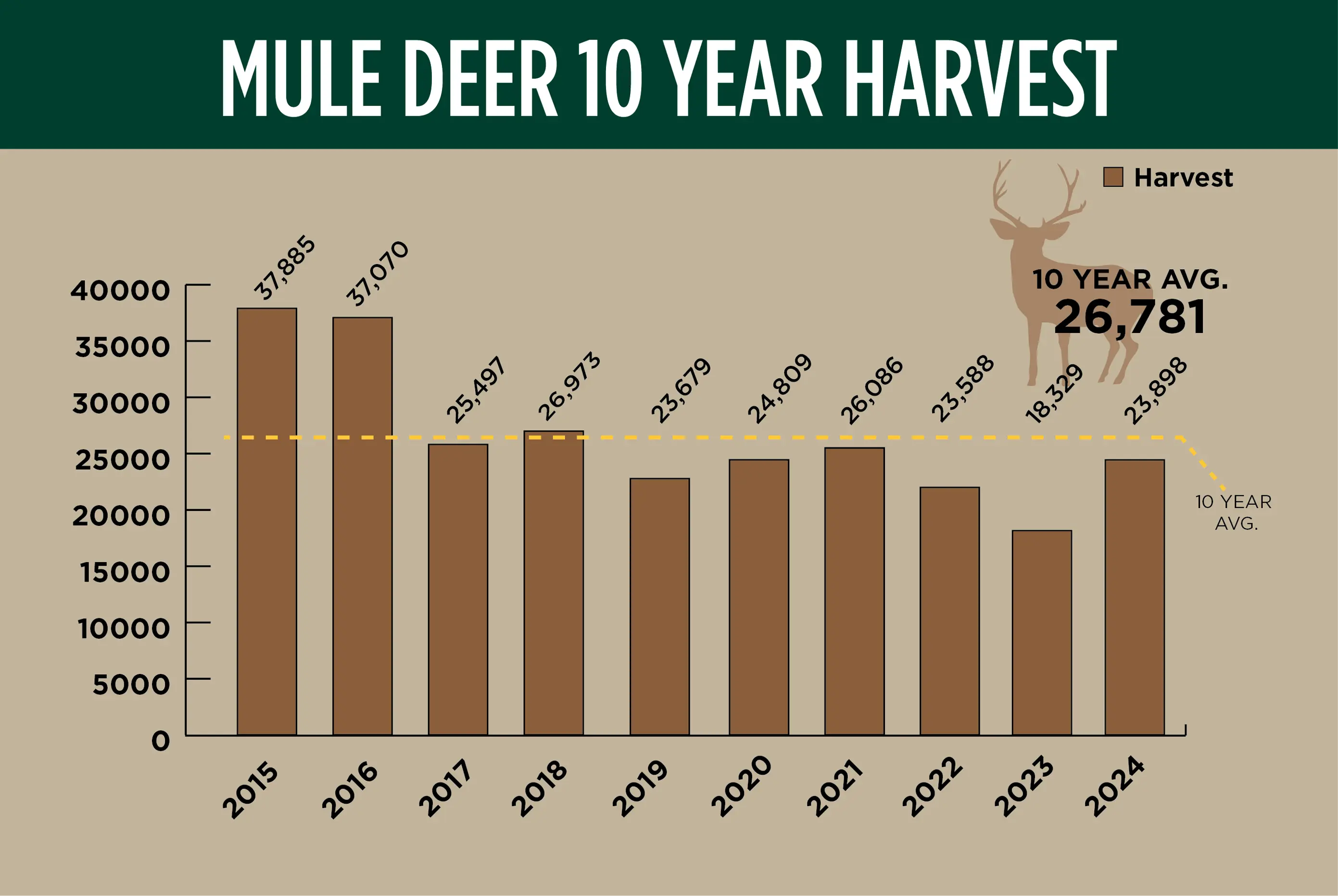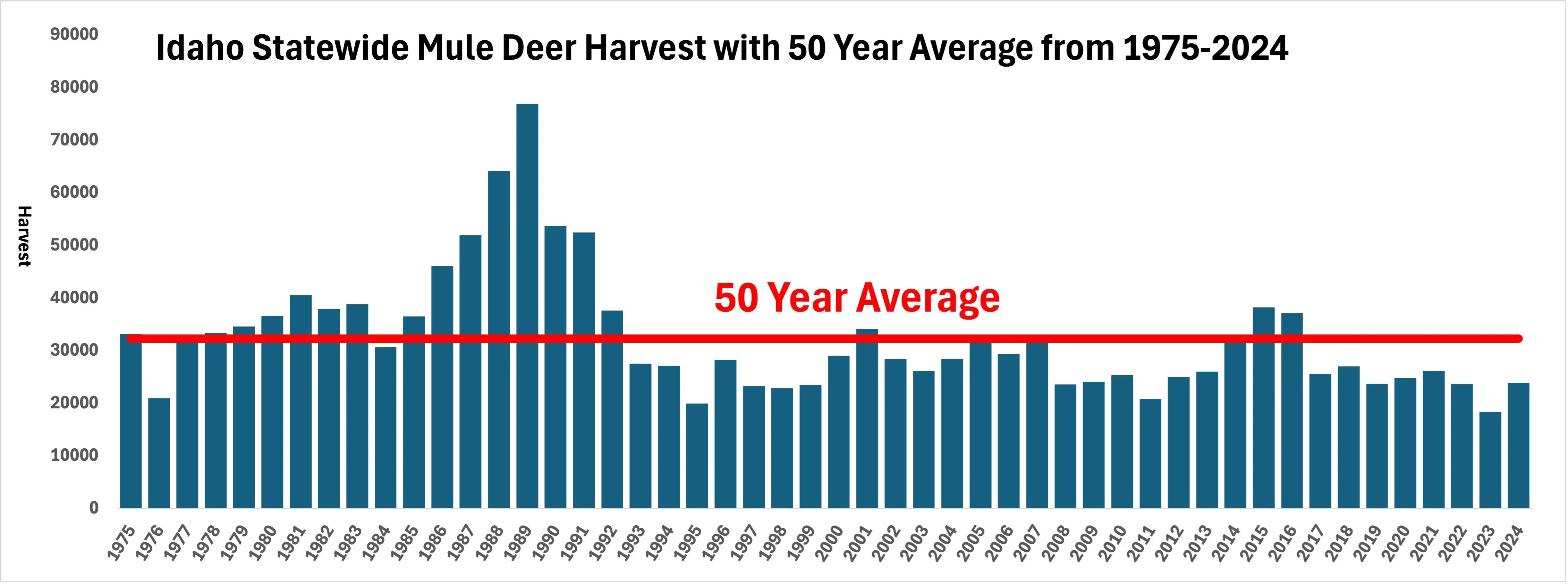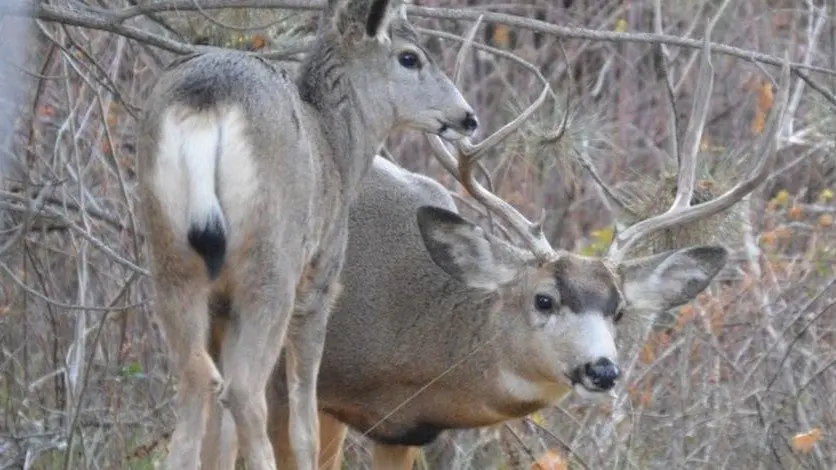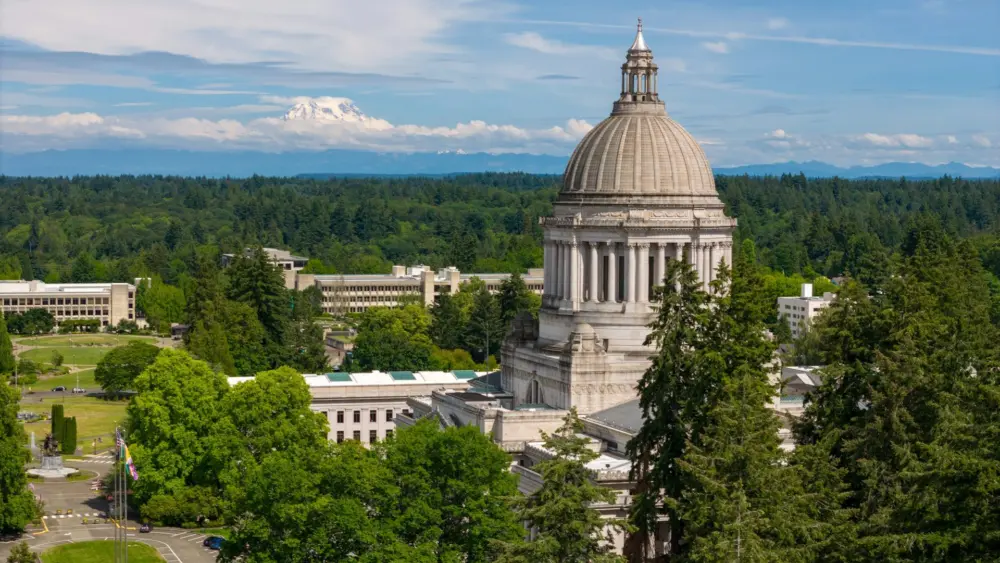BOISE, ID – Mule deer hunters have reason to be optimistic about this fall, and cautious about the future. Mule deer harvest increased by 30% last fall over the 2023 season, and signs look promising we could see another harvest bump.
Positive signs for 2025
Mild-to-normal winters typically grow Idaho’s mule deer herds, or more accurately, allow herds to grow. But as history has often shown, the good times don’t last forever. A normal winter in 2024-25 means favorable odds we’ll have as good or better mule deer hunting than last year. Survival of collared fawns last winter was around 58 percent, a tick up from the long-term average of 57 percent.
“We’re growing mule deer herds with 58 percent survival,” Fish and Game’s Deer/Elk Coordinator Toby Boudreau said.
Idaho is a big state, fawn survival wasn’t uniform, and there are also some troubling signs ahead. But first, the good news. After the Southeast Region was hit hard by a catastrophic winter in 2022, it posted some of the highest fawn survival rates in the state last winter, which bodes well for their rebounding mule deer herds.
Things were opposite in the Southwest Region where despite a normal winter in Unit 39, which is one of the state’s most-popular mule deer units, only 31% of collared fawns survived. No need to panic, yet, because Unit 39 still has one of the biggest mule deer herds in the state, but low fawn survival is a sign that the herd is reaching the limits of its habitat. Biologists have been seeing lighter fawns coming into recent winters, and fawn weight is an accurate predictor of their winter survival.
“Light fawns often indicates some habitat limitations on summer range,” Boudreau said.
In short, too many mouths and not enough groceries. The solution could be something that’s counter intuitive to many hunters – the need to harvest more deer, including does, to get a healthy and sustainable herd. Otherwise, a hard winter could hit those herds harder and drop them farther.
But when we look across southern Idaho, mule deer herds are healthy and growing in most areas, so the potential is there for an above-average hunting season.
To see regional information about mule deer hunting, see the 2025 Deer/Elk Outlook.

What does “average” really mean?
Here’s where things get squishy. When we talk about “better hunting” we tend to be short sighted. Last year’s harvest was the highest since 2018, but 37% less than 2015 (highest of the decade) and below the 10-year average.
The harvests in 2015 and 2016 were each more than 10,000 deer above the 10-year average, which were followed by the catastrophic winter of 2016-’17. Since then, the annual harvests have ranged from 18,329 to 26,973.
As mentioned earlier, mule deer’s historic population cycles are fairly predictable. Herds grow when conditions allow, then plummet after a hard winter, then start rebuilding.
“It’s winter that decides which way that cycle goes,” Boudreau said.
It’s also hard to say what “average” Idaho mule deer hunting means when you look across past decades. The 50-year chart shows a similar trend to the 10-year graph. A decade of unusually high mule deer harvests between the 1980s and 1990s drove up the 50-year average, and only 3 years have had “above average” harvests since then.
So we’re currently in rebuilding mode, but there’s no guarantee how long it will continue because you can’t predict when the next hard winter will hit.

Looking way back
Mule deer are an iconic western game animal that Idahoans have hunted for over a century. And with each generation, you will hear “it’s not like it used to be.” That’s true, and always has been true, because of the cyclical nature of mule deer populations, as well as the ever-changing landscapes they inhabit.
When you factor in Idaho’s population growth, development, changes in habitat, wildfires, drought, increases in elk herds, and other factors that influence mule deer herds, each decade looks different. And yes, some are worse than others.
If you’re looking for a return to the “good ol’ days,” which were often much shorter than people remember, you see how dynamic mule deer populations can be, and how difficult, if not impossible, it can be to duplicate those years when the planets aligned and mule deer thrived for a glorious, but limited, time period. In short, it’s different now than it was a couple decades ago, and it will likely be different from now in a couple more decades.
But things look pretty good for now. Not historically great, but better than we’ve seen in recent years. Not to overstate the obvious, but more deer in the mountains and sagebrush means better chances for a higher harvest. And things get better because consecutive normal winters also likely means more mature bucks.
Take a deep dive into the history of mule deer in Idaho
Wildlife biologist Eric Freeman from the Southeast Region presented the Idaho Fish and Game Commission with this presentation on the history of Idaho’s mule deer herds. This is an excellent summary of how our herds are faring, not just in Idaho, but elsewhere in the mule deer country, and how things have changed over decades and centuries. It’s well worth your time.





